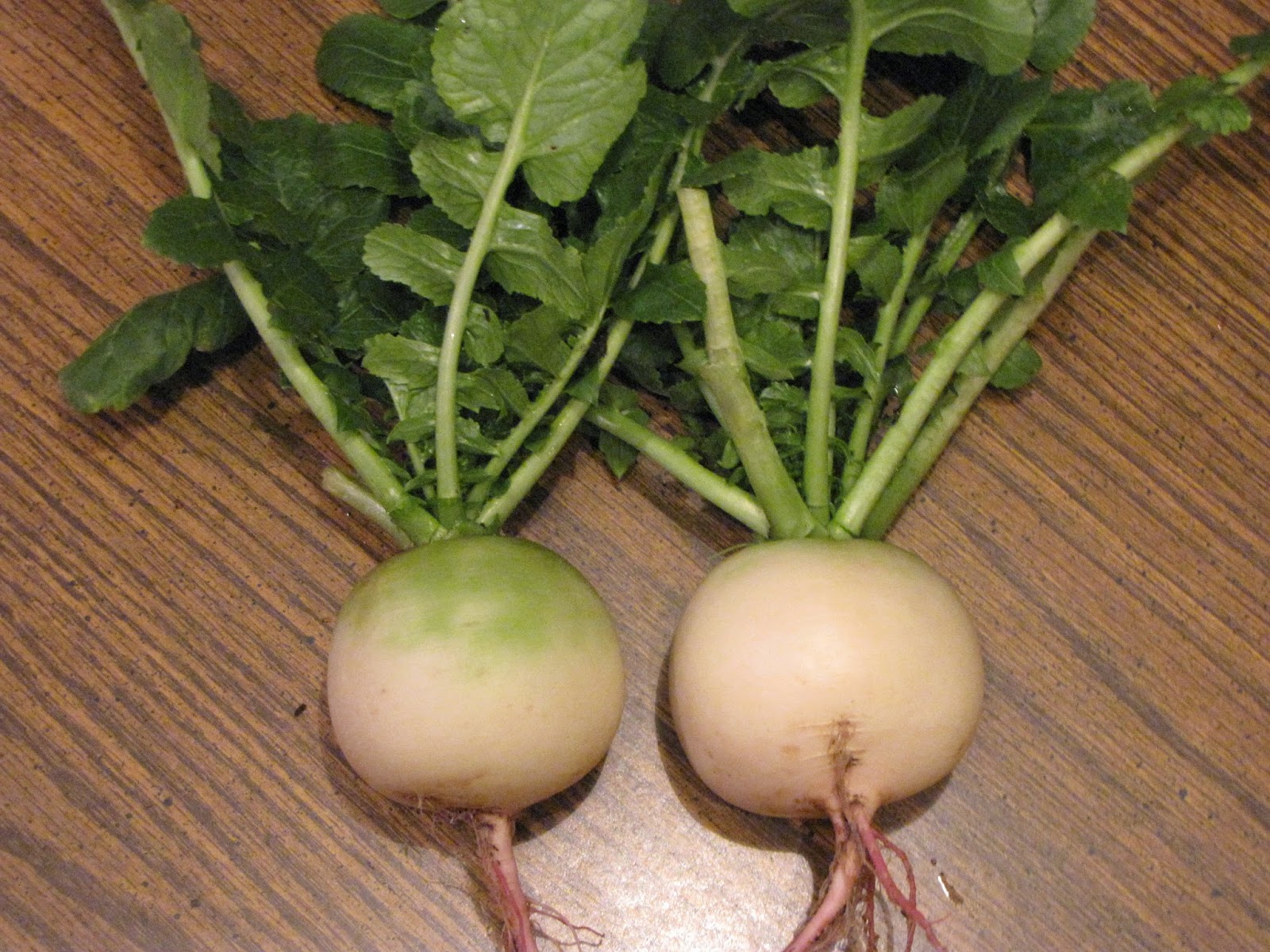 |
White Satin carrots from
Denise's garden this past April. |
It doesn't take much to look at these tender morsels to the right and sum the photo up with one word, YUMMY! One of my favorite carrots to grow for their outstanding flavor and unique appearance is White Satin. Very similar in growth to any of the "Nantes" type carrots, this variety performs to perfection in our garden.
History shows carrots as originating in Afghanistan and initially being purple, white, or yellow. Nature took its course, wild varieties crossbred, and many mutations of colors were born. During the 15th century Europeans mainly grew the white carrots for cattle feed. Today we find them hybridized into gourmet varieties and happily at home in many gardens throughout the world.
Without the presence of any pigmentation in their roots, white carrots tend to have a very smooth and rich flavor. They still contain the desired health promoting substances called phytochemicals, which are the naturally occurring compounds that protect the body against disease. However, if one were comparing white carrots to their orange counterparts, those with color would have a higher presence of these disease fighting compounds within them. There is a link below to the World's Healthiest Foods website that has a very nice write up on carrots. It will have us all saying, "What's Up Doc?"
 |
| White Satin carrot tops |
It can be hard to recognize White Satin for the showstopper it really is, as it appears to look like any other carrot variety when growing. Strong tops and blunt tips make harvesting from the ground a breeze. Once pulled, the distinctive white color would have many trying to determine if they planted a carrot or a parsnip due to their similarity in appearance. Nevertheless, after smelling the rich aroma that quickly fills the air and taking a bite, you readily see you have been witness to a little piece of carrot heaven.
White Satin is easily appreciated for its ability to grow well at Green Meadows without the presence of pest and disease issues in either the spring or fall. Last winter, with the unexpected weather conditions, it performed the best out of any of the carrots I grew. Overwintering was easy and as soon as the days lengthened to where the plants could photosynthesize again, they happily finished their growth cycle. I planted carrot seeds the second and third week of September and they finished their growth the last week of April and the first week of May.
Green Meadows Healthy Garden Tip:
Carrots are one of the crops at Green Meadows that do extremely well with either spring or fall plantings. Rarely do we find any issues with insects or disease although aphids can become a problem if neglected when they strike. The key to success with their growth is well prepared soil, proper spacing, even moisture, and nutrients rich in potassium and phosphorous. Keeping nitrogen to a minimum will reduce forking and overly hairy roots. Both planting alongside something from the allium family or very light dustings with wood ashes are excellent measures for preventing carrot rust flies. These flies lay their eggs in the top of the soil around your plants. Upon hatching, the larva, or maggots, tunnel into the soil and then feed on the carrot roots rendering them inedible. Avoiding any excess moisture at harvest time prevents the roots from cracking.
Most carrots planted this time of year will need to overwinter and finish their growth cycle next spring as the ground temperatures warm, the days lengthen, and the plants have the ability to photosynthesize again. This makes it important to have a garden plan in place that allows their longevity in the soil with good plant companions. For those that hope to have some carrots for the fall and winter holidays, choosing an early maturing variety that requires less growth time or baby carrots is your best option.
Links:
The first link below is for those who would like to read about the additional health benefits of carrots. It will take you to the website of the World's Healthiest Foods, which has a nice article posted.
http://whfoods.org/genpage.php?tname=foodspice&dbid=21 - link to the World's Healthiest Foods carrot page
The seeds for this wonderful variety are easy to find and the two sites below usually have them readily available. I will also have some extra seeds in the shed either this weekend or the first of next week for those who may want to enjoy and try their hand at overwintering.
http://www.territorialseed.com/product/White_Satin_Carrot_Seed/carrot_seed - link to Territorial Seed Company
http://www.johnnyseeds.com/p-7094-white-satin-f1.aspx - link to Johnny's Seed Company
The last link is to Cornell University. Cornell has one of the most comprehensive charts on the disease resistance of different carrot varieties. Although White Satin does not have a spot on the list, I have grown them at Green Meadows several times and they continue to surprise me with their amazing production and ease of growth in a difficult environment.
http://vegetablemdonline.ppath.cornell.edu/Tables/CarrotTable.html - link to disease resistance of different carrot varieties from Cornell University
If anyone needs assistance with how to grow carrots, setting up an environment conducive for them to do well, or the proper way to space and hill, just let us know.
Happy Gardening,
Denise, Beds 25 & 29
 Friday, October 10, noon-1:00 p.m. Presented by Cobb County Extension Horticulture Agent Neil Tarver, as part of the ongoing Lunch & Learn series of the Master Gardener Volunteers of Cobb County, at the Training Room of the Cobb County Water lab, 662 South Cobb Drive (at the intersection with Atlanta Rd.).
Friday, October 10, noon-1:00 p.m. Presented by Cobb County Extension Horticulture Agent Neil Tarver, as part of the ongoing Lunch & Learn series of the Master Gardener Volunteers of Cobb County, at the Training Room of the Cobb County Water lab, 662 South Cobb Drive (at the intersection with Atlanta Rd.).







